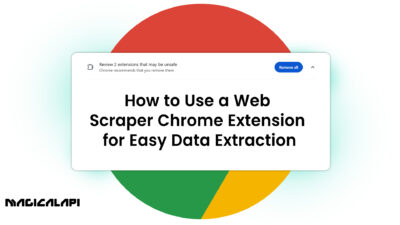There is a tremendous quantity of digital content available today. Businesses and researchers need several tools to make sense of that content. Information extraction is an important process that processes a lot of unstructured text to convert it into structured knowledge. If you are thinking about enhancing your data strategy to turn raw text into actionable intelligence, then understanding this concept is the crucial first step.
Table of Contents
Why Information Extraction Matters in Today’s Data-Driven World
In a data-abundant world, the challenge is not in amassing data, but in getting it to actionable intelligence. Much of the data that exists (such as emails, articles, social media postings, legal contracts and scanned documents) is considered unstructured or semi-structured text. Computers can’t easily handle unmodified text to pick out critical facts, entities, or relations.
Information extraction (IE) helps to solve this problem. IE brings a technical feature to automatically read and understand text to extract certain, predetermined data points. Without this option, companies would continue to rely on bloated and error-prone manual review to process documents, monitor trends, or manage an internal knowledge base. This is a critical brute force to making data scalable and transferable, which increases efficiency and leads to improved decision making in (nearly) every field.
What Is Information Extraction? The Basics Explained
What is information extraction, in its most basic definition? It is the automatic process of recognizing and extracting specific and useful pieces of content from written text and putting them into a structured format, like a database table or a spreadsheet. Information extraction (IE) is a key aspect of Natural Language Processing (NLP) and artificial intelligence by representing human language knowledge in a format that machines can read.
Typically, this process involves taking an input of unstructured text (such as an article from a news site) and converting it into a structured piece of output (like a table that lists the “Organization,” “Location,” and “Key Event”). This conversion process makes large amounts of text more consumable and usable for subsequent analysis, machine learning models, and business intelligence.
How Information Extraction Works: Key Processes and Techniques
The IE process is a complex pipeline, starting from raw text to a more structured, refined output. The initial step consists of loading a very large amount of text-whether from data sources such as web pages, documents, or social media feeds, for insertion into the IE system. Advanced NLP algorithms are then employed to analyze the text, looking for patterns and specific data points. The end of the IE process involves representing the output in a structured manner.
Several key tasks and concepts are possible (depending on the symbols used above) wrapping up the majority of information extraction methods. Examples include:
- Named Entity Recognition (NER): This is the key task that detects and classifies the entities in text. That is, the task scans the contents of a single sentence and annotates words as referring to people (PERSON), organizations (ORG), locations (LOC), dates (DATE), and other relevant entity categories.
- Relation Extraction: After having identified entities, the task of relation extraction focuses on discovering the semantic relations between the entities. For example, an information extraction (IE) system might read the sentence “Jeff Bezos founded Amazon in 1994” and extract the relation: (Jeff Bezos, FounderOf, Amazon).
- Event Extraction: This task looks beyond simple relations to identify more complex event structures, typically under the guise of a “product launch,” or a “business merger” that includes all pertinent a participant and participant time and location information in relation to the event
- Open Information Extraction (OIE): In contrast to relation extraction which typically is restricted to specific semantically defined relation expressions, OIE is designed to operate across a wide range of domains and contexts and extract the relation without having to predefine a schema or domain, thus improving the approach to understanding texts across previously unspecified contexts.
LinkedIn Company Scraper - Company Data
Discover everything you need to know about LinkedIn Company Scraper , including its features, benefits, and the various options available to streamline data extraction for your business needs.
Essential Components of an Information Extraction Pipeline
An effective Information Extraction (IE) system depends on a predefined sequence of compenents working in a certain order, to deliver high correctness and properly structured output. The components can vary based on the source data and intended output, but typically include the following:
- Text Pre-processing: The first step is preparing the raw text. Pre-processing may involve tokenization (segmenting the text into words or sentences), part-of-speech tagging (assigning nouns, verbs, etc.), and lemmatization or stemming (reducing words to their base form).
- Pattern Matching/Feature Engineering: The system will determine the presence of the desired information in the text, typically through identifying specific patterns, rules or features. While this can involve using handcrafted rules or regullar expressions, today it will often involve statistically driven and deep learning approaches with sophisticated models.
- Knowledge Base Population: The last step involves formally inserting the extracted facts and relationships into a knowledge graph, relational database or some sort of structured file (e.g. JSON, XML), which means the structured data is finally ready for querying and/or analysis.
Read More: AI data scraping
Deep Dive: Different Types of Data for Information Extraction
IE systems are tailored to deal with many data sources, each possessing unique challenges. The decision to exploit an information extraction technique is judged heavily on the type of data:
- Unstructured Text: This refers to items such as blog posts, news articles, academic papers, and social media items that can be a variably structured lump of text that sounds like conversational or narrative prose, where information could be extracted using robust NLP models like NER and Relation Extraction, to extract meaning and context. For example, if you were trying to understand how to scrape linkedin data using python, you would apply an IE technique to pour through the mess of unstructured text blobs on the profile pages.
- Semi-Structured Text: This refers to html web pages, emails or structured word documents such as invoices and resumes. These are typically larger chunks of objects that possess text content and underlying structure in the form of tags, tables, and other identified header content that are parsed from the extract content before any extraction takes place.
- Structured Data: Although structured data (e.g., CSV files or DB tables) is essentially ready for processing and could serve as a source for an IE system if built to integrate or map to the knowledge graph. However, at the end of the day, IE is nearly concerned with the first two types of data.
Common Applications of Information Extraction Across Industries
IE systems are powerful tools that drive efficiency and insight across nearly every modern sector:
- Business Intelligence (BI) and Market Research: Extracting company names, individuals, funding rounds, and sentiment from news feeds, competitor websites, and industry reports will help to identify trends and competitive insights. Possible use is tracking job openings; knowing how to scrape linkedin jobs is useful to recruiters and business developers when scanning for new job opportunities or shifts in labor market.
- Finance and Legal: Analyzing legal, contracts, and regulatory filings to automatically identify clauses, risks, deadlines, and entities, to expedite due diligence and compliance checks.
- Healthcare and Biomedical Research: Mining scientific literature to analyze and retrieve information about diseases, drugs, treatment protocols, and genetic interactions – finding and screening information quicker for discovery and data augmentation for researchers to analyze and obtain reliable information for their analysis.
- Customer Relationship Management (CRM): Mining email transcripts and social media posts to extract key details about customers, their intent to buy, and their complaints to automate support routing, etc. and lead generation for sales teams.
- Web Mining and Knowledge Graphs: Extracting knowledge from the overabundance of text data available to us on the web, to augment and structure incomplete knowledge bases, and to make the web more accessible, and searchable.
Information Extraction vs. Data Mining: What’s the Difference?
Although Information Extraction (IE) and Data Mining (DM) both work with large datasets and look for useful information, they are at different stages of the data pipeline.
- Information Extraction (IE): Is concerned with text transformations. Its objective is to convert unstructured data (text) into structured data (tables, databases) in the form of specific, pre-determined information and entities. It is the precursor to data analysis, cleaning, and organizing the data for use.
- Data Mining (DM): Is concerned with discovering patterns. Its objective is to analyze large, already-structured datasets to find previously unknown, non-trivial patterns, associations, or predictive rules. DM is about using statistical analysis and machine learning to extract hidden information.
So, simply put, IE gets the ingredients ready and DM cooks the dinner.
Benefits of Information Extraction for Smarter Business Decisions
By systemically doing IE, the advantages become real business value:
- Improved Efficiency: IE automates the boring task of reading and reviewing a lot of documents, then having human staff read through all the repetitive data entry or searching, they can focus their time on higher value analytics.
- Improved Data Quality: Structured data is now cleaned and consistent compared to raw text with dirty data which allows for accurate analyses and better business intelligence. Many complications have systems that provide a linkedin scraping api to give read cleaned structured profile data into the CRM or ATS systems.
- Real-Time Intelligence: IE can work off a continuous stream of data (for example news or social feeds) to give you immediate insight into the changing market, competitive responses or emerging threats that require a faster informed decision.
- Lower Cost: Finally, the operational costs of manual labor through data entry and compliance checks can be lowered when data entry is effective automated.
The Future of IE: Integrating Large Language Models (LLMs)
The recent emergence of Large Language Models (LLMs), which serve as the basis for various generative AI applications, is transforming the landscape of information extraction software. Traditional approaches to information extraction (IE) were often implemented using rule-based systems or domain-specific statistical models that were fragile and difficult to maintain.
LLMs, on the other hand, leverage a radically different approach: zero-shot and few-shot IE. Using prompting strategies, LLMs can be instructed (with zero or very few examples) to extract and understand complex structured information directly from textual, free-form documents.
This means that information extraction will soon be possible to apply to completely new areas (e.g. a specific version of an agreement or a rare language) instantly, while exhibiting a level of accuracy and adaptability that earlier models could not, thereby holding out the prospect of a more flexible and robust data processing future.
Challenges and Limitations of Information Extraction
Although IE technology has a great deal of strength, it has its challenges:
- Ambiguous Language and Context: human language is inherently complex. Sarcasm, metaphor, and anaphoric resolution (the use of a pronoun to refer back to a noun) confuse many IE systems. Discerning precise context is a major challenge.
- Domain Adaptation: an IE system will often be trained on a dataset like news articles in order to extract knowledge, and it is then transferred to a medical text to extract the relevant knowledge. Although the markup tags may succeed for the news articles, the terminology and sentence structure of the medical text may thwart the extraction; often requiring the IE system to be retrained and/or fine-tuned.
- Data Quality: IE systems are very sensitive to the quality of the natural language processed. A poorly scanned document, an erratic format, or typographical errors can radically reduce the accuracy of extraction.
Use Magical API for Information Extraction
Information extraction softwares and APIs are specialized to provide an organized and efficient way to analyze and derive valuable insights from specific data sources. Magical API’s products, such as its Linkedin Profile Scraper and Linkedin Company Scraper, enable the automation of analysis by acquiring important data points, including current role, work history, education, and company metrics from publicly accessible LinkedIn pages, into an organized and standardized format.
LinkedIn Profile Scraper - Profile Data
Discover everything you need to know about LinkedIn Profile Scraper , including its features, benefits, and the different options available to help you extract valuable professional data efficiently.
The tools convert raw profile text into organized data that recruiters, market researchers, and B2B sales teams can use to enhance their databases. By utilizing AI-based efficiencies, these tools help users streamline and enhance data extraction efficiency and known data quality in a scalable manner without users having to build NLP models from scratch.
Getting Started: Beginner-Friendly Tools for Information Extraction
If you’re just getting started, you needn’t be too worried about programming with information extraction systems. You can access a number of user-friendly platforms and cloud services that put information extraction (IE) into the hands of non-programmers. These include the following:
- Cloud-Based NLP Services: Google Cloud NLP, Amazon Comprehend, and Azure Cognitive Services provide simple APIs for pre-trained information extraction models. These tools excel at general purpose tasks such as Named Entity Recognition (NER) and sentiment analysis.
- Web Scraping Tools with IE Capabilities: They include tools such as Octoparse or ParseHub which have baseline text pattern matching and structured data extraction capabilities that enable it to pull data from tables and lists on website pages.
- Python Libraries: From a developers perspective the baseline libraries such as NLTK and spaCy offer quite richly customizable ways to build your own information extraction pipelines, which give you control over the specific needs of your information extraction.
Conclusion for Information extraction
Information extraction is no longer seen as a niche academic topic but is an essential need for any organization seeking to thrive in the data economy. If you learn how to turn wild, unstructured text into organized structured insights, you will maximize the value of your data assets.
From speeding up recruitment processes with a tool such as a Linkedin Company Scraper to developing real-time market intelligence, information extraction will help you use your data smarter and ultimately outperform your competitors.
FAQs for information extraction
1. What differentiates Information Retrieval from Information Extraction?
Information Retrieval (IR) is about finding a collection of relevant documents – based on a user query (as in a search engine). It collects and returns the documents. Information Extraction (IE) is about finding specific pieces of information to organize and return. IE collects and returns the data.
2. Is Information Extraction synonymous with Web Scraping?
No, but they are connected and typically used together. You could think of Web Scraping as the act of collecting the raw data (the raw text of a web page). Information Extraction is the AI/NLP process to take that raw text and transform it into organized, meaningful data-informed facts about the original text. A web scrapper is an input-informed component to the IE system.
3. Which programming language is considered better for Information Extraction?
Python is just the overwhelming #1 pick, given its rich ecosystem of extremely high-quality NLP libraries such as spaCy or NLTK, and a range of deep learning libraries that can be plugged in like PyTorch, and TensorFlow.





